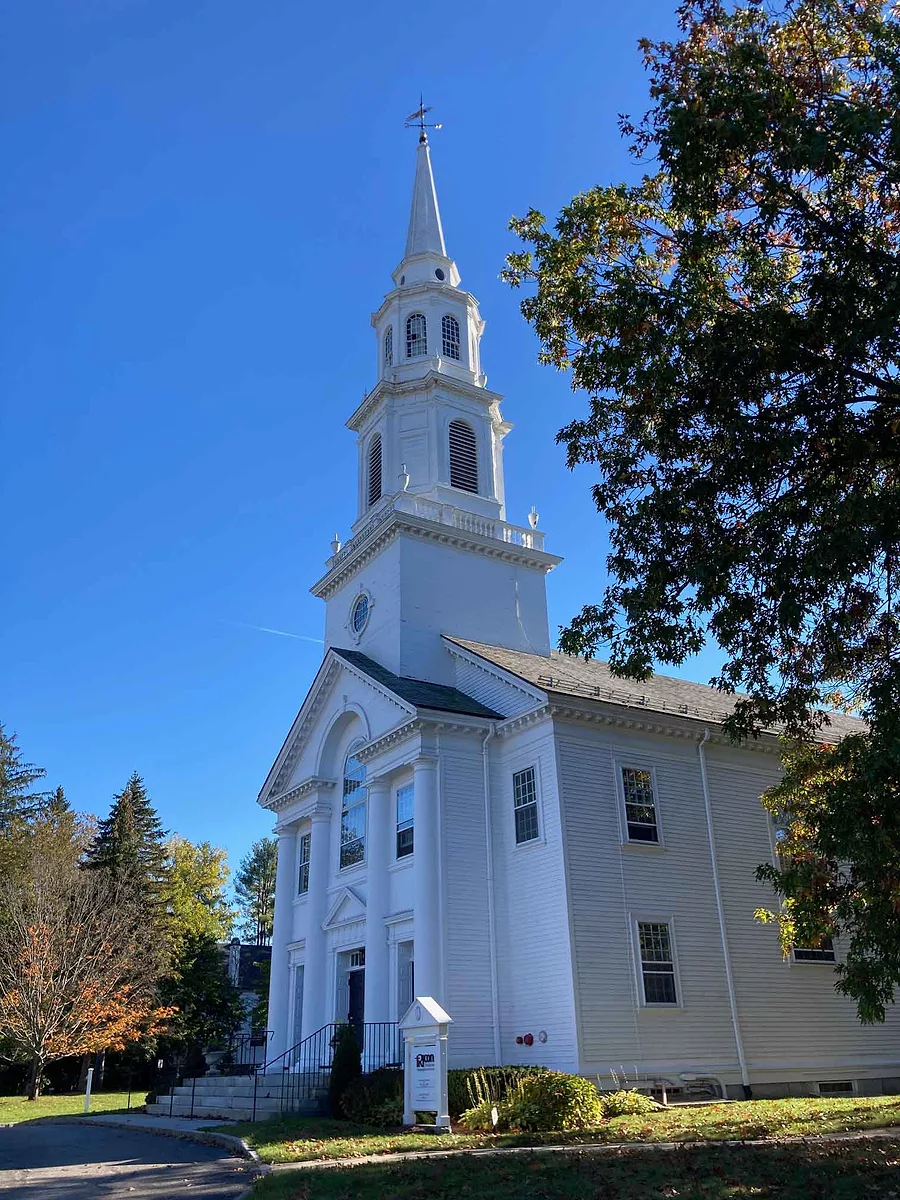Concord Center is a remarkable setting where our lives are comforted by continuity to a past of early patriotism, radical thinking, and stories of remarkable local residents. That continuity was intentionally reinforced by one local architect whose vision and talent placed unusually well-designed buildings in locations where Colonial Revival architecture informs the image of Concord as a place built on its mythic past.
Evolution of the streetscape that we now take for granted as the image and surround of Concord Center was far from serene. The Milldam Company was formed in 1828 to drain the existing mill pond and create a continuous commercial zone that provided spaces for gunsmiths, harness repairmen, shoe stores, and other vital services of that day. A century later, the young architect, Harry Britton Little, watched physical changes unfold along the Milldam and Main Street that included telephone poles lining both sides of the street, overhead wires and rails set in granite cobblestones for street railways, and the conversion of stables to car sales shops with garage workspaces. On Walden Street, he witnessed the Trinitarian Congregational Church burning to the ground. The resulting vacant sites on the Milldam were eyesores on the town he so admired.
In 1914, Harry B. Little founded his own architecture firm. He married Miriam Barrett of Concord, and they moved into a house he designed on Simon Willard Road. This would be the start of a thirty-year-long series of local buildings he completed while working as a partner in the firm that designed the National Cathedral in Washington and Trinity College Chapel in Hartford- both powerful examples of Gothic Revival ecclesiastical design. His vision for Concord was one of calmer grandeur. The Colonial Revival provided an architectural language that could be scaled for public spaces and fit well with street frontages and the civic landscape of Concord’s churches, library, banks, office buildings, and the comparative intimacy of shop windows.

Middlesex Savings Bank

111 Walden Street
In sharp contrast, nationally recognized Concord architects Thomas Shaw and Andrew Hepburn (of the Boston firm that designed Colonial Williamsburg) sought to impose a far more aggressive renewal at the Milldam. They envisioned replacing buildings on both sides along the Milldam, widening the street, and providing planned parking and service access. The redevelopment was proposed by A. Y. Gowan, a wealthy entrepreneur, who acquired the Abbot estate on Sudbury Road and tried to form a new real estate company that would welcome local investors. The proposed demolition aroused strong resistance locally, with authenticity cited as the key virtue of the existing buildings- rather than architectural quality. There may also have been concern about the concentration of ownership that would displace the variety of independent family businesses. In 1929 the proposal was withdrawn – perhaps in part due to the onset of the Great Depression?
Harry Little made a lasting impact on Concord with his style of architecture. He rebuilt the Trinitarian Congregational Church on its previous foundation after it burned in 1924. He was particularly proud of its fine steeple. It was the church’s third incarnation after previous fires, and it endures almost 100 years later.
In 1929, Harry Little designed The Antiquarian Society’s house on Lexington Road, which would later become the Concord Museum. The 1930s, despite the arrival of the Great Depression, heralded an important series of buildings that shaped Concord’s civic architecture. In 1930, Little designed the Loring Fowler Library in West Concord. In 1932, the Middlesex Savings Bank rose to complete a triad of commanding bank facades that had begun in the 1830s. In 1934, his design expanded the Concord Free Public Library. He erased the complicated Victorian presence of the 1873 exterior by erecting new facades that extended the building while preserving the multi-story, octagonal interior space. From outside, a Jeffersonian dome and colonnade presided over the intersection of Main Street and Sudbury Road and emphasized the consistency among early clapboard houses in its neighborhood. Apart from an occasional house, Concord Center has almost no Victorian architecture that is assertive enough to break the spell cast by the period’s Colonial Revival vision of a quiet context for extraordinary lives.

Concord Free Public Library
 Image Caption
Image CaptionHarry Little was a master of scale and street presence in strikingly different contexts. He designed multi-paned bow windows to dominate the fronts of Helen’s Café and Anderson’s Market (now Main Streets Café). These emphasized the intimate scale of 18th and early 19th century shops in a way that contrasted with large plate glass shop fronts that had begun to dominate the street-level experience in neighboring buildings. Later, he focused on large but intentionally recessive brick office buildings. One example is the gabled addition to the clapboard Town House that faces Monument Street.
Harry Britton Little’s stance on civic architecture may have helped inspire ideas for a recreation of a Colonial Concord, but the buildings he designed are of very high quality and were rebuilt without prior demolition. Concord is the beneficiary of his attachment to the town and the application of his design talent to its architectural coherence and self-image as perfectly situated in a richly storied, historic America.
Nationally, modernism came to displace historicist design within schools of architecture, on university campuses, and corporate centers after World War II. Little’s approach to architecture would be sidelined as derivative, but he always maintained that style was secondary to the orchestration of scale, proportion, and materials. Within the constraints and opportunities inherent in the Colonial Revival, he demonstrated true talent and imagination. Harry Britton Little deserves admiration as a designer and respect for his place in the transformation of Concord Center into the little-changed setting for our lives today.
All photos courtesy of the author


